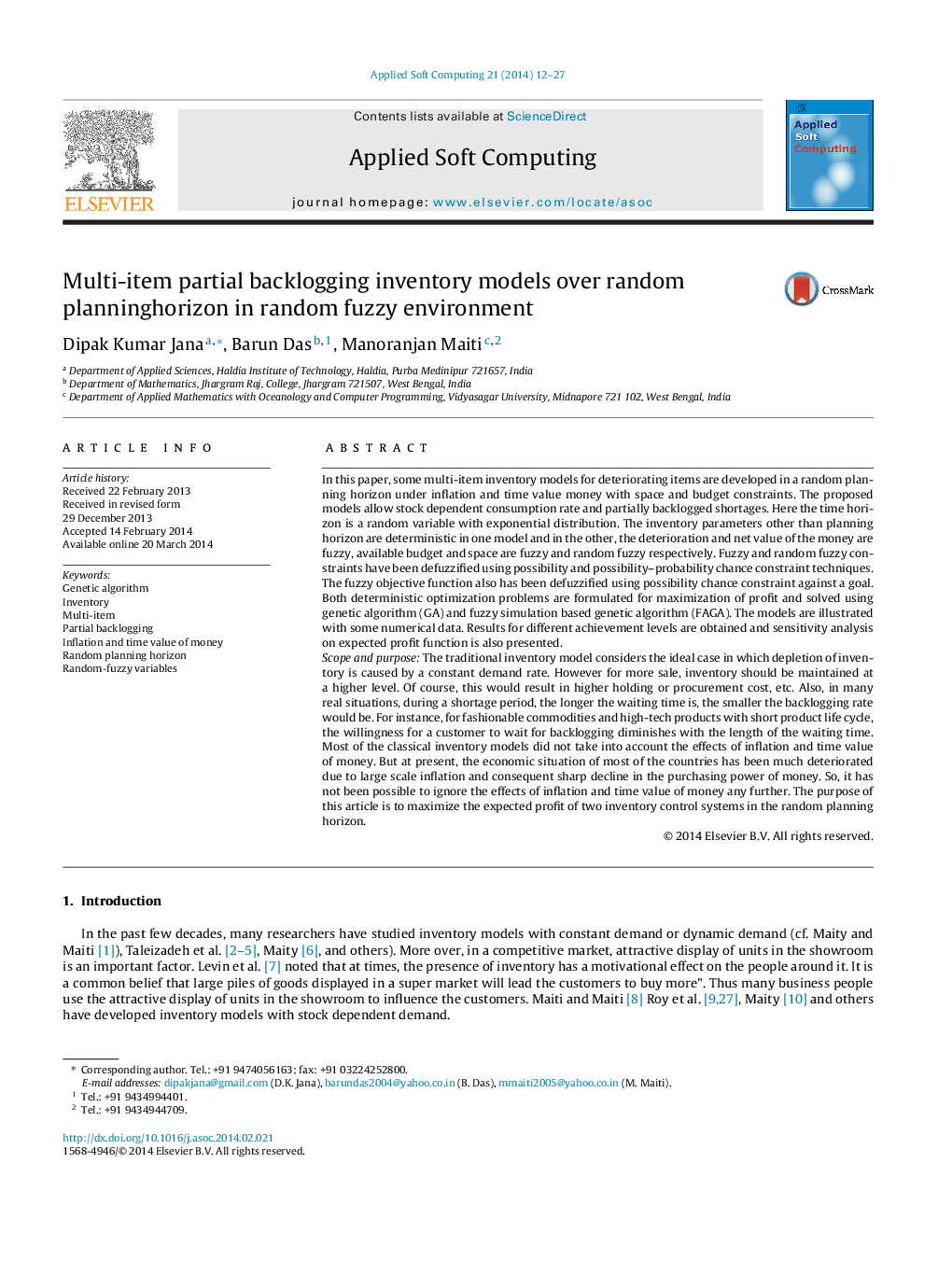| کد مقاله | کد نشریه | سال انتشار | مقاله انگلیسی | نسخه تمام متن |
|---|---|---|---|---|
| 495439 | 862827 | 2014 | 16 صفحه PDF | دانلود رایگان |
• Multi-item inventory models allowing partial backlogging, deterioration under random planning horizon.
• Inventory models with random planning horizon in imprecise environment with the effect of inflation and discounting.
• A random-fuzzy constraint has been successively introduced for the first time in the inventory models.
• A real-life inventory system with limitations on available budget and storing space constraints in both fuzzy and random-fuzzy.
• Maximum profit has been compared by genetic algorithm and fuzzy simulation based genetic algorithm.
In this paper, some multi-item inventory models for deteriorating items are developed in a random planning horizon under inflation and time value money with space and budget constraints. The proposed models allow stock dependent consumption rate and partially backlogged shortages. Here the time horizon is a random variable with exponential distribution. The inventory parameters other than planning horizon are deterministic in one model and in the other, the deterioration and net value of the money are fuzzy, available budget and space are fuzzy and random fuzzy respectively. Fuzzy and random fuzzy constraints have been defuzzified using possibility and possibility–probability chance constraint techniques. The fuzzy objective function also has been defuzzified using possibility chance constraint against a goal. Both deterministic optimization problems are formulated for maximization of profit and solved using genetic algorithm (GA) and fuzzy simulation based genetic algorithm (FAGA). The models are illustrated with some numerical data. Results for different achievement levels are obtained and sensitivity analysis on expected profit function is also presented.Scope and purposeThe traditional inventory model considers the ideal case in which depletion of inventory is caused by a constant demand rate. However for more sale, inventory should be maintained at a higher level. Of course, this would result in higher holding or procurement cost, etc. Also, in many real situations, during a shortage period, the longer the waiting time is, the smaller the backlogging rate would be. For instance, for fashionable commodities and high-tech products with short product life cycle, the willingness for a customer to wait for backlogging diminishes with the length of the waiting time. Most of the classical inventory models did not take into account the effects of inflation and time value of money. But at present, the economic situation of most of the countries has been much deteriorated due to large scale inflation and consequent sharp decline in the purchasing power of money. So, it has not been possible to ignore the effects of inflation and time value of money any further. The purpose of this article is to maximize the expected profit of two inventory control systems in the random planning horizon.
Journal: Applied Soft Computing - Volume 21, August 2014, Pages 12–27
